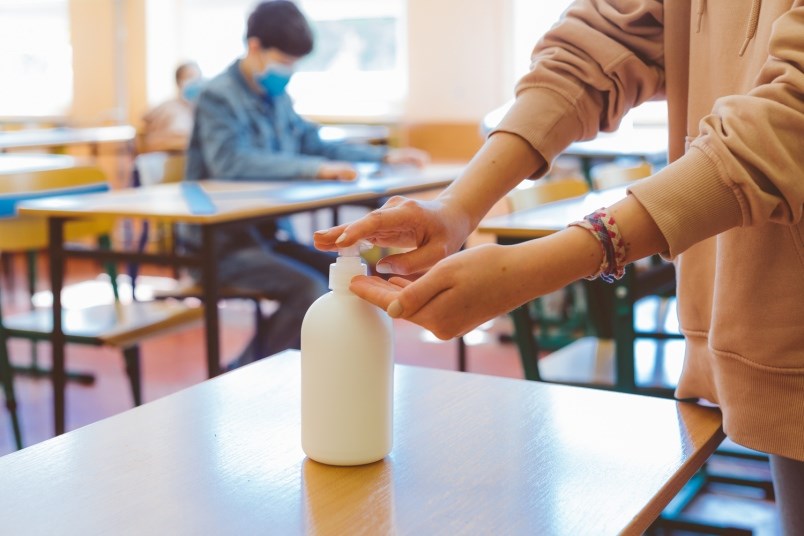Students’ return to class isn’t causing a spike in COVID-19 transmission in B.C. – but health officials will remain vigilant.
That was the message from provincial health officer Dr. Bonnie Henry in her regular briefing on Monday, Oct. 5.
Henry offered reassurance to families about the presence of COVID-19 in schools. She noted that, although about 500,000 students and staff are back in school, rates of COVID-19 remain very low among children and teenagers.
Henry said testing rates have gone up significantly since students returned to class – with rates now four times higher among children aged five to 12, and two times higher for teenagers, compared to rates before school started.
Despite that fact, Henry said, positive test numbers remain very low – only about seven in 1,000.
“The test positive rate remains very low in that age group,” she said.
As of Oct. 1, 50 exposures had been reported in school settings, about half of which were in elementary schools and half at the secondary level – but Henry pointed out that with more than 2,000 schools in the province, numbers are still very low.
Henry said public health officials will be monitoring the situation in schools very carefully now that the province has moved past the first potential incubation period.
But, so far, she said, the return to class has not come along with a jump in COVID-19 cases.
“The proportion of COVID-19 cases, by week, in school-age children remains low, less than 10%, and that has been consistent in the first three to four weeks since schools opened,” she said.
Henry said the focus on contact tracing – to ensure that close contacts of anyone who has tested positive with COVID-19 isolates appropriately – is so far proving to be effective.
“We need to recognize that our goal, our overriding goal, is to ensure that kids are safely in school. What we have seen and what we continue to see are very low exposure events and very few, if any, transmission events in schools,” she said.
“What we’re not seeing is schools amplifying transmission in a community.”
Questioned by reporters why public health officials can’t provide more information about COVID-19 exposures in schools – such as what cohort or class an exposure occurred in – Henry said the current process of notification is designed to balance health protection and privacy.
In some cases, Henry said, families and staff have shared information themselves about positive COVID-19 tests, and she said there are cases when that’s appropriate. But she also said sometimes those people have been the recipients of “nasty notes and bad behaviour,” and that kind of reaction makes people reluctant to share test information or to even go for testing in the first place.
Henry noted that all school exposure events, including the dates they occurred, are publicly posted by health authorities (in Fraser Health, the exposure list is here, for Vancouver Coastal Health here). Any person deemed a close contact who needs to monitor for symptoms or self-isolate is contacted directly by health officials.
Read more from the New West Record






